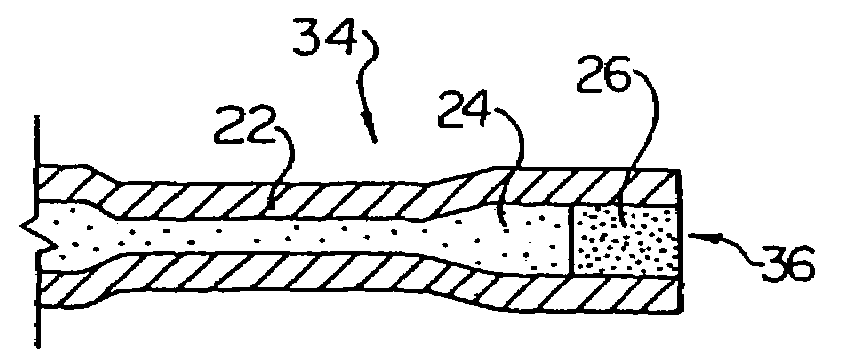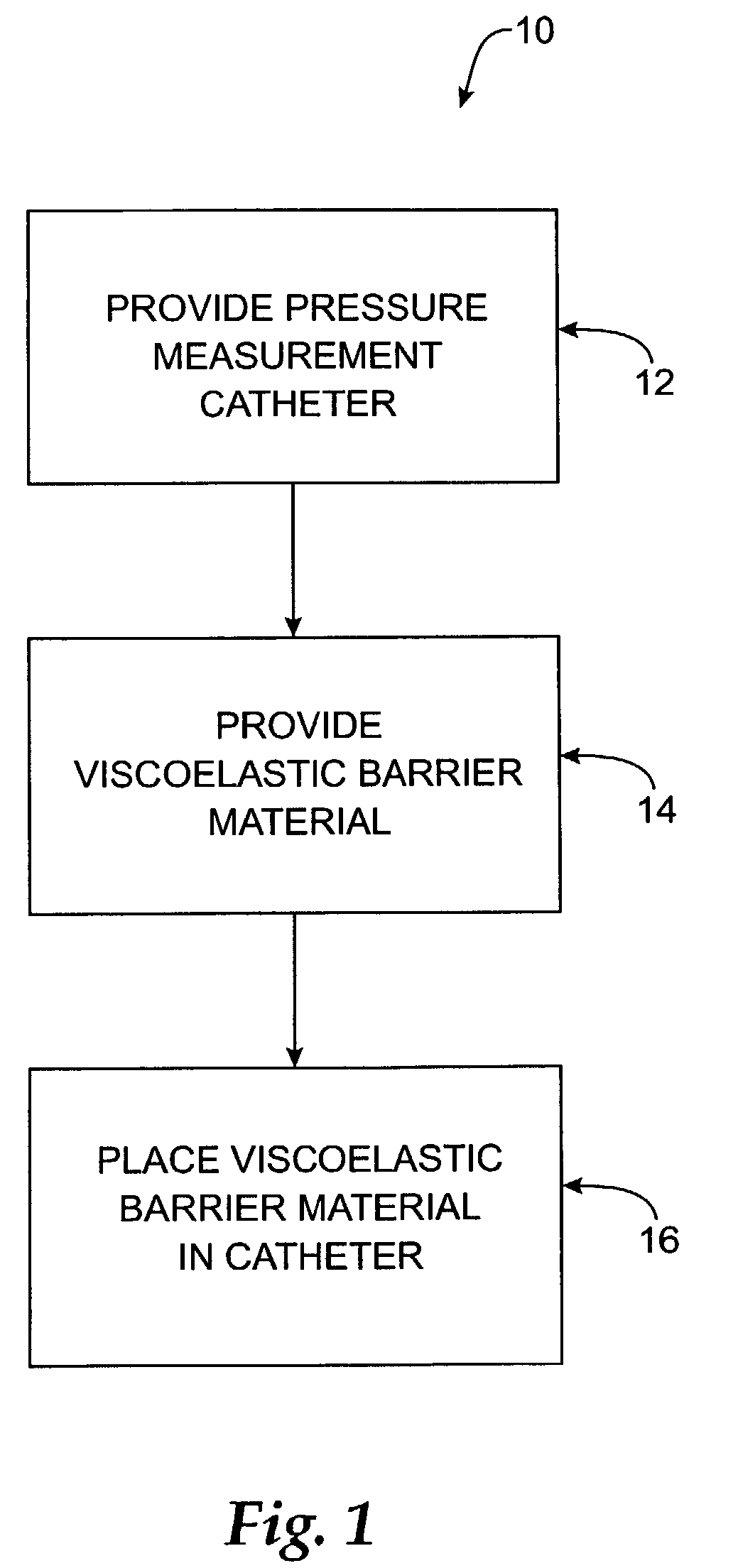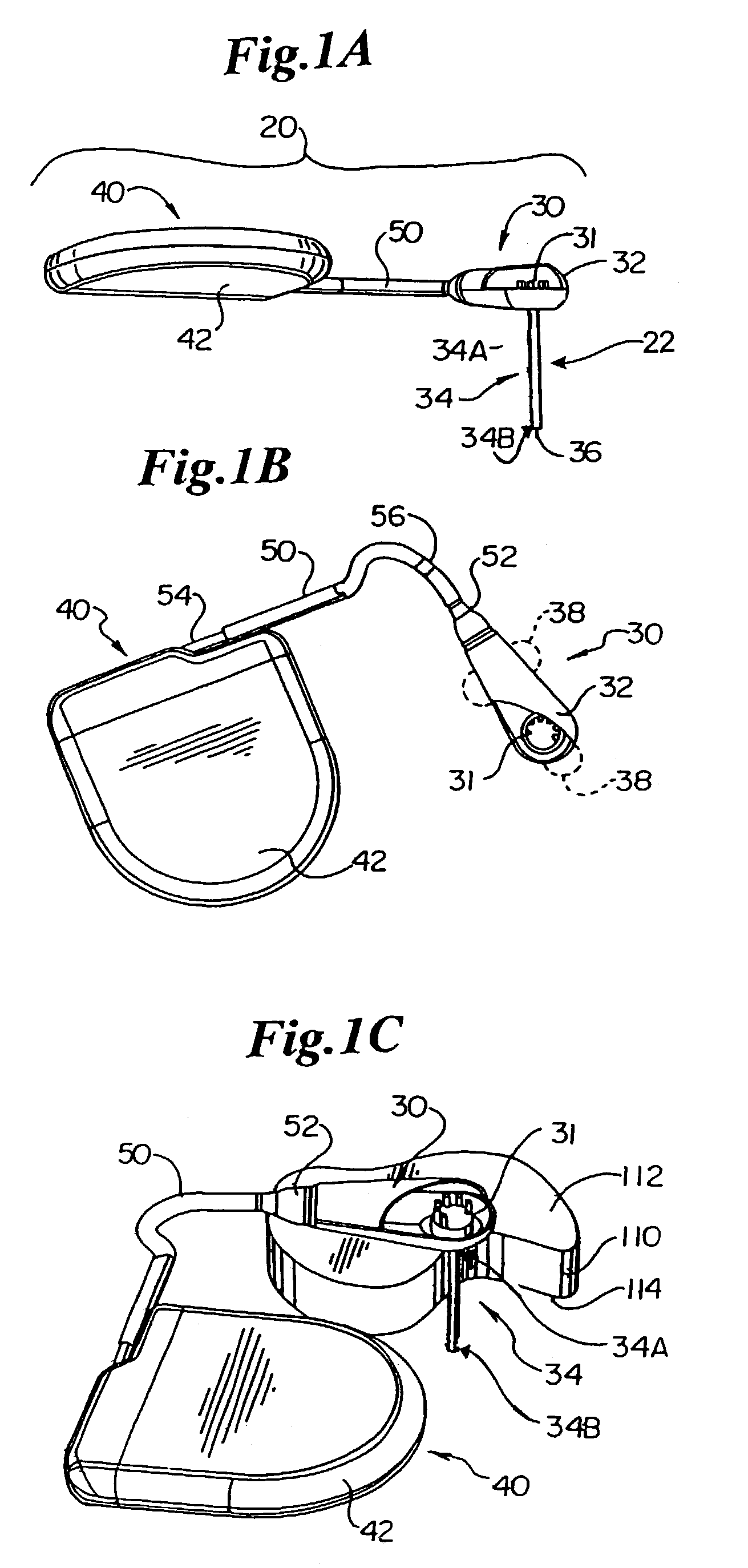Barriers and methods for pressure measurement catheters
a technology of pressure measurement and barriers, applied in the field of medical devices and methods, to achieve the effect of improving viscoelastic barrier materials, and facilitating the use of catheters
- Summary
- Abstract
- Description
- Claims
- Application Information
AI Technical Summary
Benefits of technology
Problems solved by technology
Method used
Image
Examples
example 1
Material Stability Testing
[0089]The purpose of this investigation was to measure viscosity of NuSil Gel-8000, prepared in 1:1 ratio and combined with 42% MED-361 silicone oil at 12,500 cps, by weight, at room temperature (˜25° C.) and body temperature (˜37° C.) over the course of a year. Certain measures of viscosity, such as change in viscosity over time measured as standard deviation from an average viscosity, may correlate with stability of a barrier material.
[0090]First, NuSil Gel-8000 was prepared in a 1:1 ratio of 35 g(+ / −0.1 g) of part A to 35 g(+ / −0.1 g) of part B, and the combination was mixed with an electric mixer set to 10, for ten minutes. MED-361 silicone oil at 12,500 cps was then added to the 70 g(+ / −0.1 g)Gel-8000, in an amount of 42% by weight, or 29.4 g(+ / −0.1 g), to form a total weight for the combined substance of 99.4 g(+ / −0.1 g). The combined substance was then placed in a conventional centrifuge and centrifuged at 1000 rpm for two minutes. Immediately or soon...
example 2
Barrier Washout Testing
[0093]The purpose of this investigation was to establish a washout range in vitro with the NuSil Gel-8000 / MED-361 silicone oil, prepared as described above. Barrier material was placed in several pressure transmission catheter devices to form barriers and washout (or “recession”) was measured at 0, 2, 4 and 6 weeks. For comparison, a number of catheters were prepared with Dow Q7-2218 gel, prepared off ratio at between about 1.65:1 and about 1.90:1 to provide sufficient softness and having no silicone oil added. The Harvard Pulsatile Blood Pump™ was used to simulate the ventricular action of the heart through the manipulation of the flow rate. A water and glycerol solution was used to replicate the viscosity of blood.
[0094]Every two weeks, at 0, 2, 4 and 6 weeks, barrier recession and length was measured in each transmitter with a ruler, reticule and microscope. (Barrier recession was measured with the reticule and barrier length with the ruler.) The Harvard Pu...
PUM
 Login to View More
Login to View More Abstract
Description
Claims
Application Information
 Login to View More
Login to View More - R&D
- Intellectual Property
- Life Sciences
- Materials
- Tech Scout
- Unparalleled Data Quality
- Higher Quality Content
- 60% Fewer Hallucinations
Browse by: Latest US Patents, China's latest patents, Technical Efficacy Thesaurus, Application Domain, Technology Topic, Popular Technical Reports.
© 2025 PatSnap. All rights reserved.Legal|Privacy policy|Modern Slavery Act Transparency Statement|Sitemap|About US| Contact US: help@patsnap.com



